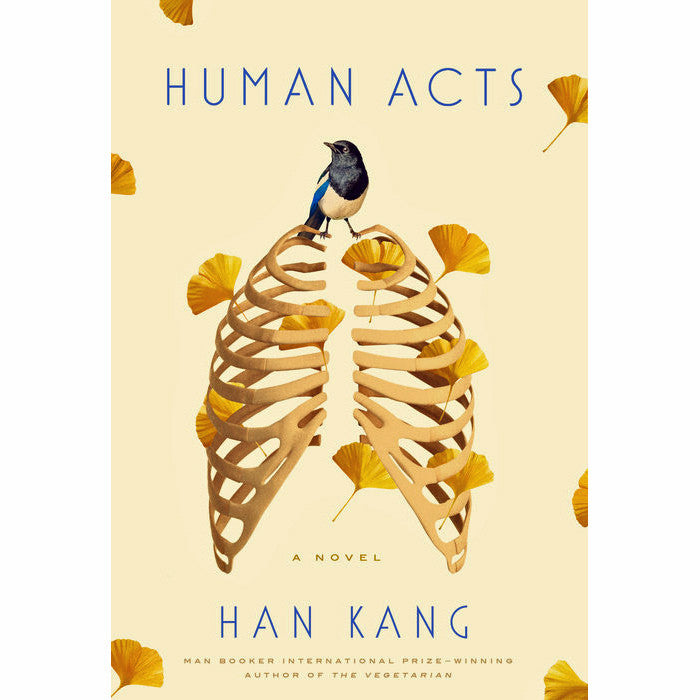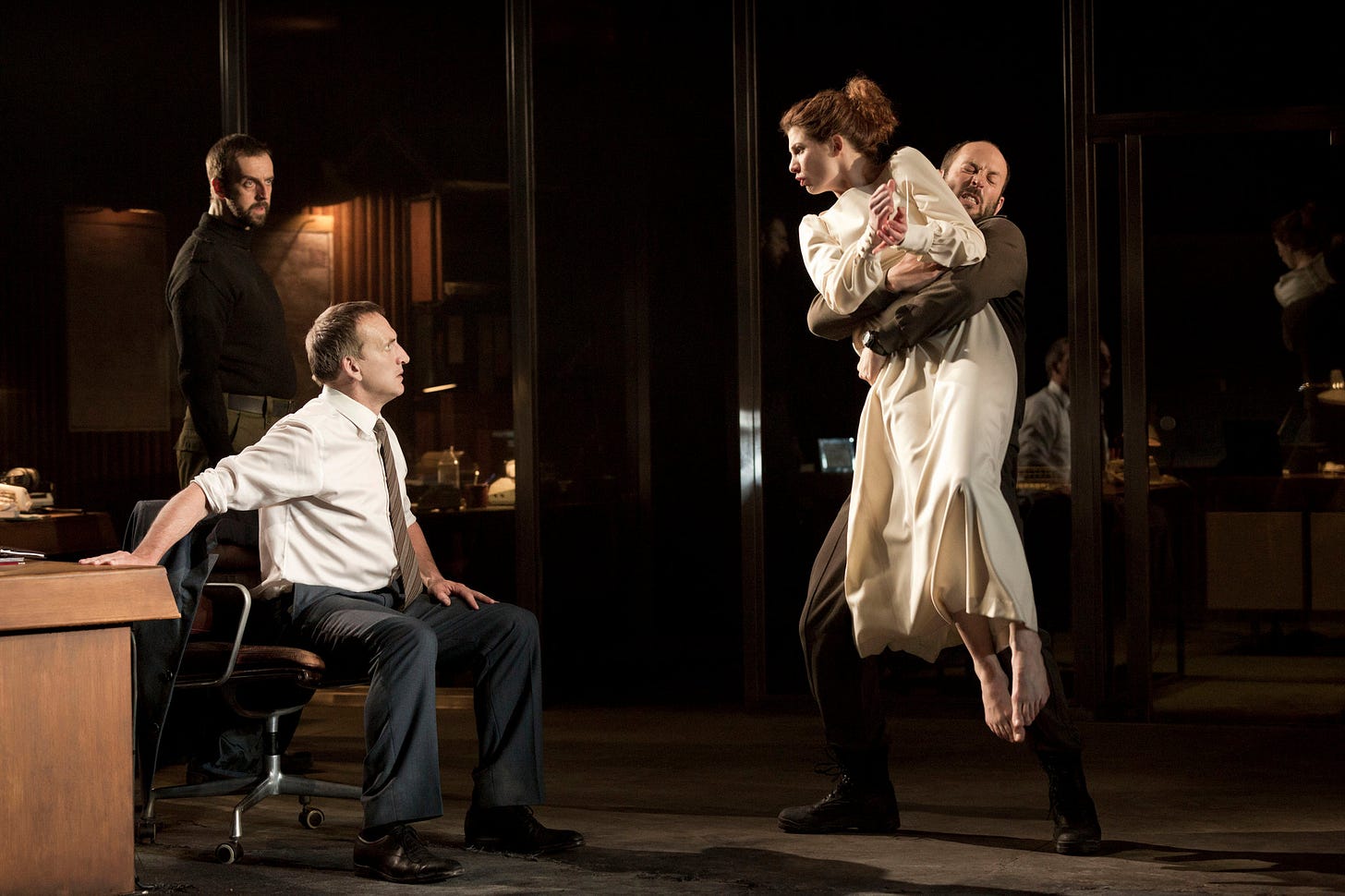Content Warning - Some pretty gnarly descriptions of torture, killing and decomposition.
Han Kang’s novel Human Acts, first published in 2014, is a book about acts of state violence. Acts that we’re heartbreakingly familiar with; mutilation, sexual assault, mass shootings, torture, censorship. But a stranger and more haunting act as well – the act of turning a person into a body. The act of turning a human subject, with political agency and social connection and interpersonal responsibilities, into a piece of vulgar flesh.
The novel tells the story of the Gwangju Uprising. In 1980 the South Korean city, sixth most populous and deep in the south, was the site of a series of protests against the dictatorship of Chun Doo-hwan. The state responded with barbarity and butchery. Workers and students fought back with heroism, and the state... escalated.
Han Kang starts her book with corpses. More and more filling a municipal hall where a small group of volunteers, among them the barely teenaged Dong-ho, try to identify them. In this first chapter Dong-ho witnesses things that were once people become putrid meat:
“When you first saw her, she was still recognisably a smallish woman in her late teens or early twenties; now, her decomposing body has bloated to the size of a grown man. Every time you pull back the cloth for someone who has come to find a daughter or a younger sister, the sheer rate of decomposition stuns you. Stab wounds slash down from her forehead to her left eye, her cheekbone to her jaw, her left breast to her armpit, gaping gashes where the raw flesh shows through. The right side of her skull has completely caved in, seemingly the work of a club, and the meat of her brain is visible. These open wounds were the first to rot, followed by the many bruises on her battered corpse. Her toes, with their clear pedicure, were initially intact, with no external injuries, but as time passed they swelled up like thick tubers of ginger, turning black in the process.”
This happens to the characters in this (unfortunately, very accurate and well researched) book again and again. A torture survivor recalls being turned into a hungry and beaten creature, hunched protectively over his meals. Factory girls strip to their underwear, in an attempt to remind their attackers of their delicate and vulnerable humanity, but their bodies are bloodied and violated anyway. A dead character addresses us from a pile of corpses.
But we don’t just witness these de-personed bodies. Again and again, characters try to care for these bodies too. They wash and dress and bury these victims of state violence.
In Sophocles’ play Antigone, first performed in 441 BC, the city of Thebes attempts to recover from a brutal civil war. The former king Oedipus’ two sons fought and killed each other, and now the Theban state has feted one, Eteocles, as the saviour of the city and decried one, Polynices, as a traitor. Eteocles’ corpse has been buried with honour and Polynices’ corpse has been left to rot.
Antigone, one of their surviving sisters, attempts to bury Polynices’ body. This act, according to the new King Creon, is so detrimental to the state that he buries Antigone alive. To care for the wrong body then, to put humanity and care back into the condemned body, threatens an entire state.
Care is, to some, a threat.
I’ve drawn a dichotomy here between human subjects – political, abstracted, sacred – and bodies – corporeal, physical, profane. But there may be something counter-revolutionary about this line of thinking. Resistance to tyranny, after all, happens corporeally.
Jeong-dae’s sections, the character addressing us from the body pit, is of course a desperate and defeated testimony. He is a fifteen year-old, gunned down, dumped and left to rot. He feels jealousy and anger and heartbreak and yearning. But after a while, he starts to think of the other bodies not as a mass of horror, but as units of humanity with stories and pain that he can almost hear.
“Our encounters were, as always, poorly improvised things. We were never able to tell who the other was, but could vaguely surmise how long we’d been together for. [...] Every time our shadow-boundaries brushed against each other, an echo of some appalling suffering was transmitted to me like an electric shock.
“If we’d been given a little more time, might we have arrived, eventually, at a moment of understanding?”
Thinking then, of this human pile, I wonder if this act of violent bodification is an act at all? After all, I don’t believe in a soul or a mind as distinct from the material body. I would argue that we do not have or own or occupy a body, we are already bodies.
This means that every time one of our bodies is destroyed, it is a total and tragic loss. It is the end of the world, and it is a total victory for tyranny.
But there is also a chance, albeit a slim chance, that we can join our bodies in a web of mutual care. That we can hold each other up not as an idea, not as an argument, but as a corporeal force in the world. That we can build power, not in the abstract, but in these real streets that we really live in.
Dong-ho is confused by his fellow volunteers laying out the Taegeukgi, the South Korean flag, on the massacred bodies. He sees, maybe, an attempt to turn these corpses into something more. An attempt to turn the stench and the rot into a story about sacrifice and about nations and about democracy. It is clearly a failed attempt.
Decades after the massacre, Dong-ho’s mother finally finds the unmarked grave where Dong-ho’s body was disposed of. They don’t bury him with a flag, even though the mainstream political opinion is now on the side of the students and workers who participated in the uprising.
Instead Dong-ho’s mother polishes each one of his bones with her own hands.






